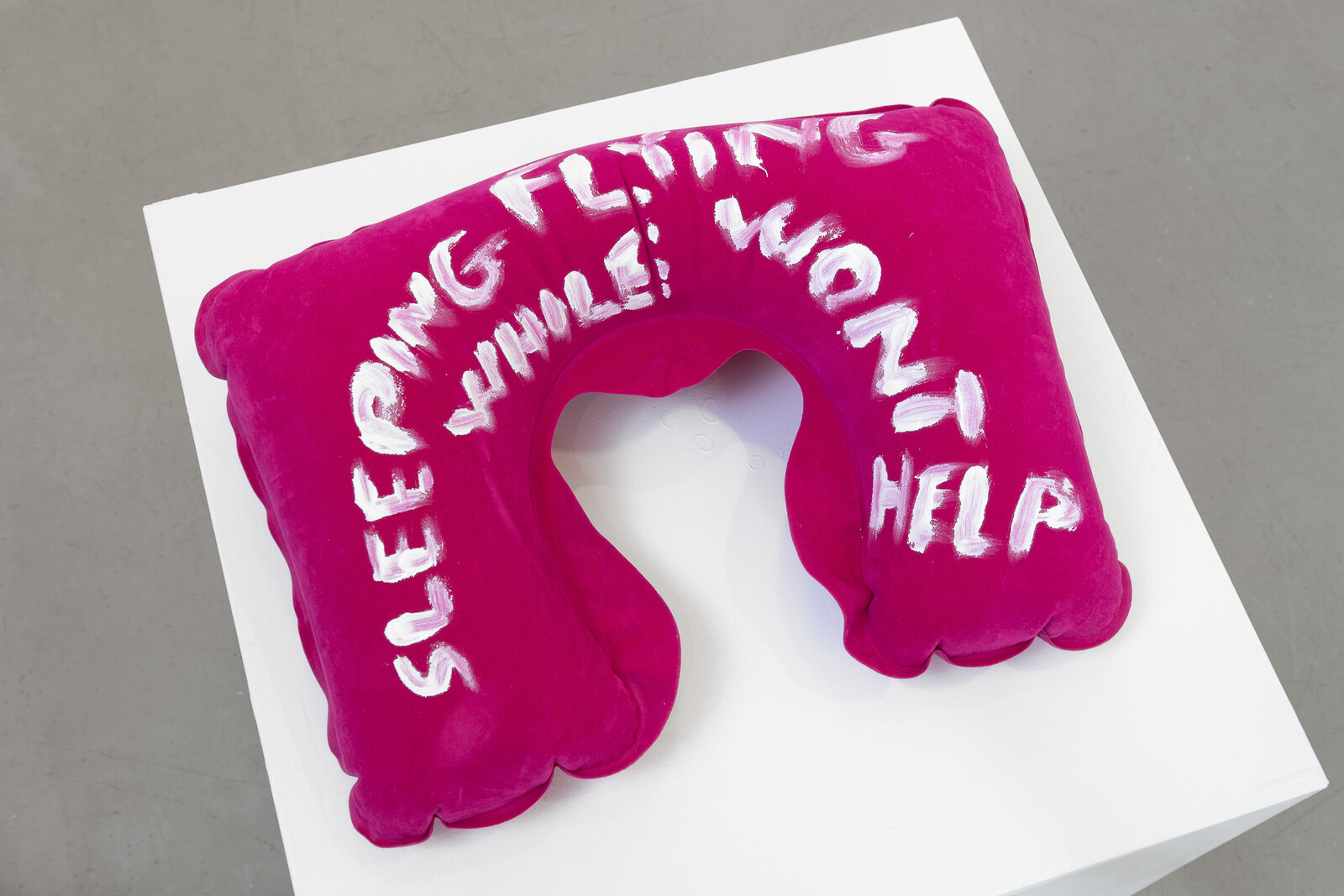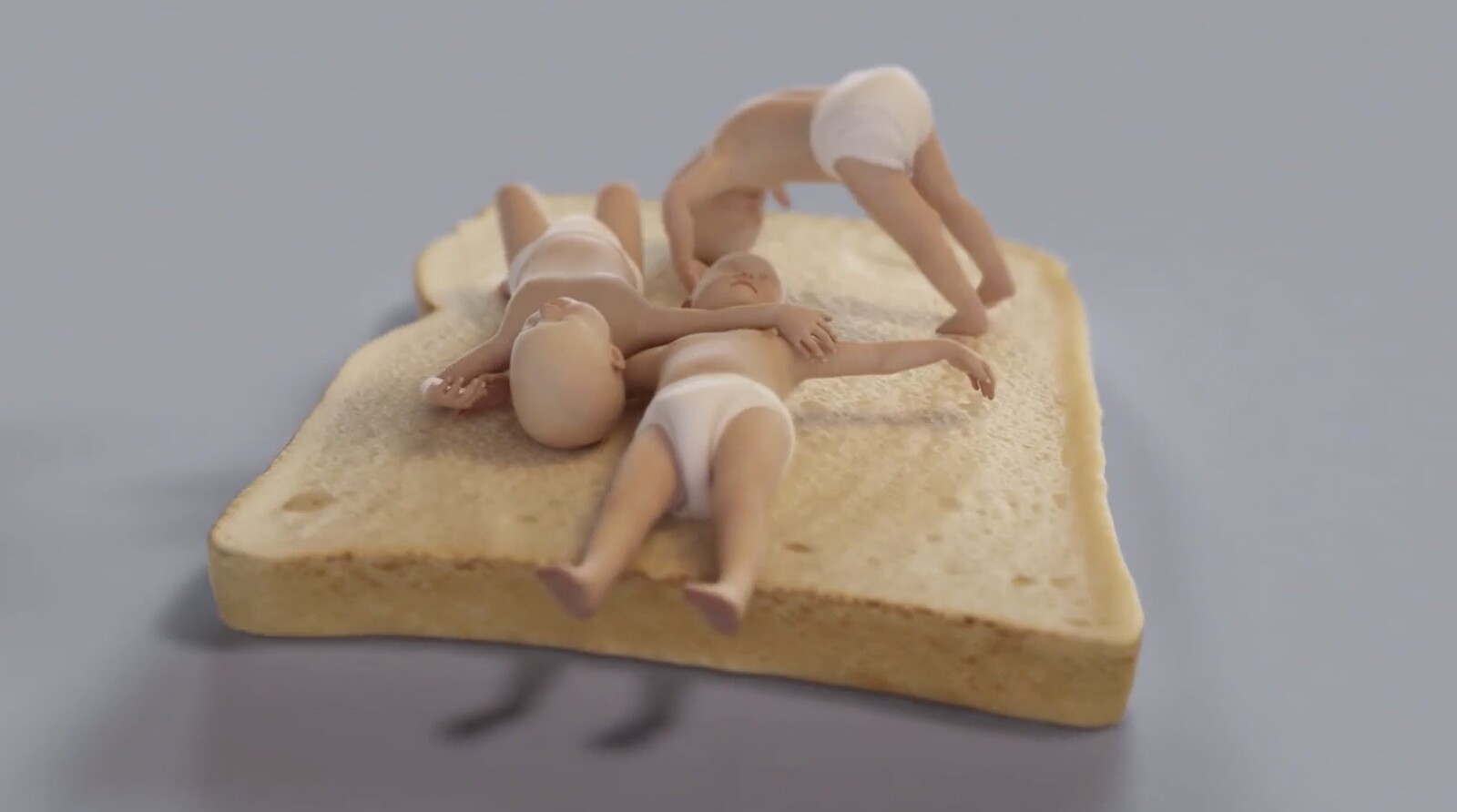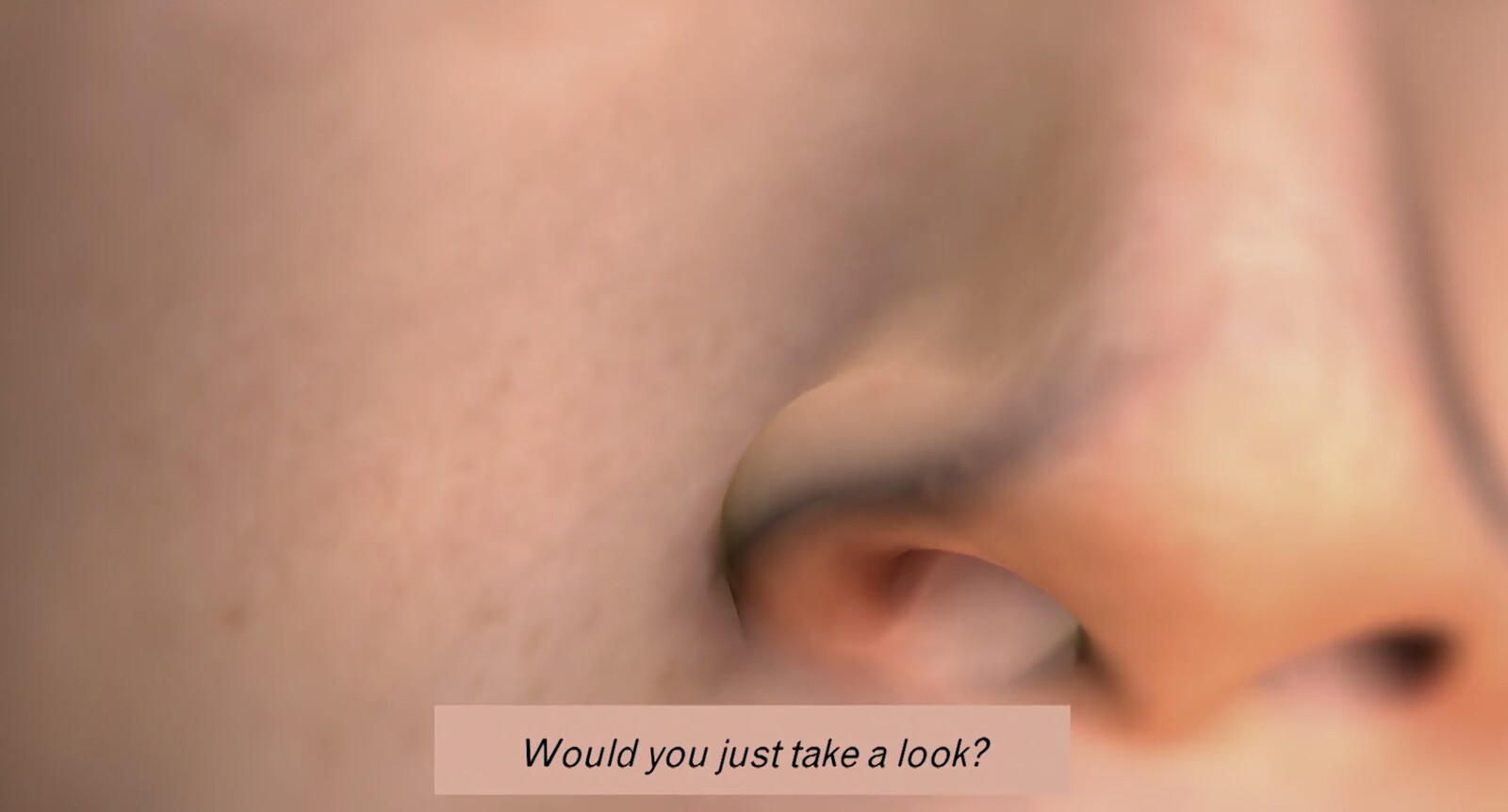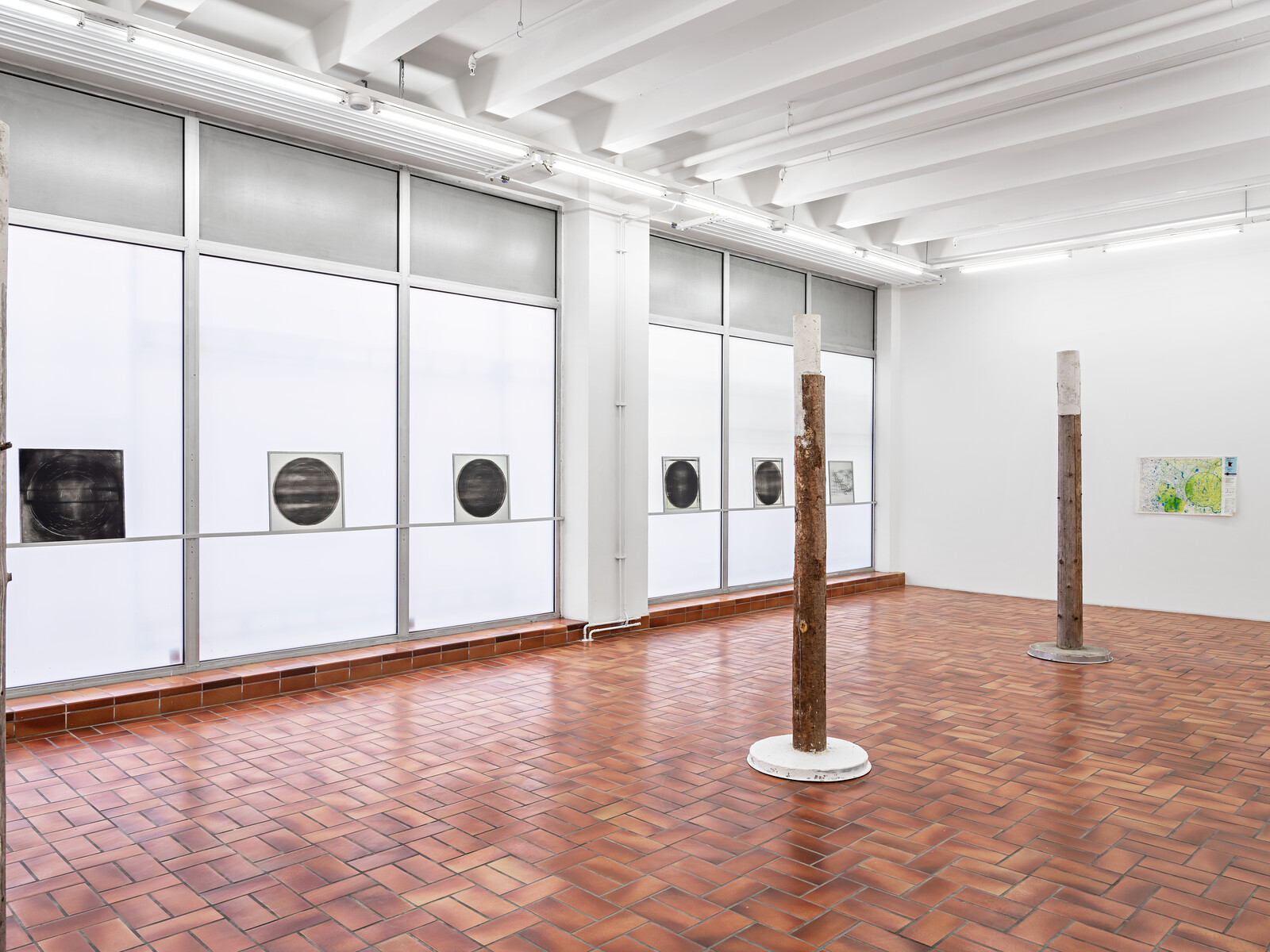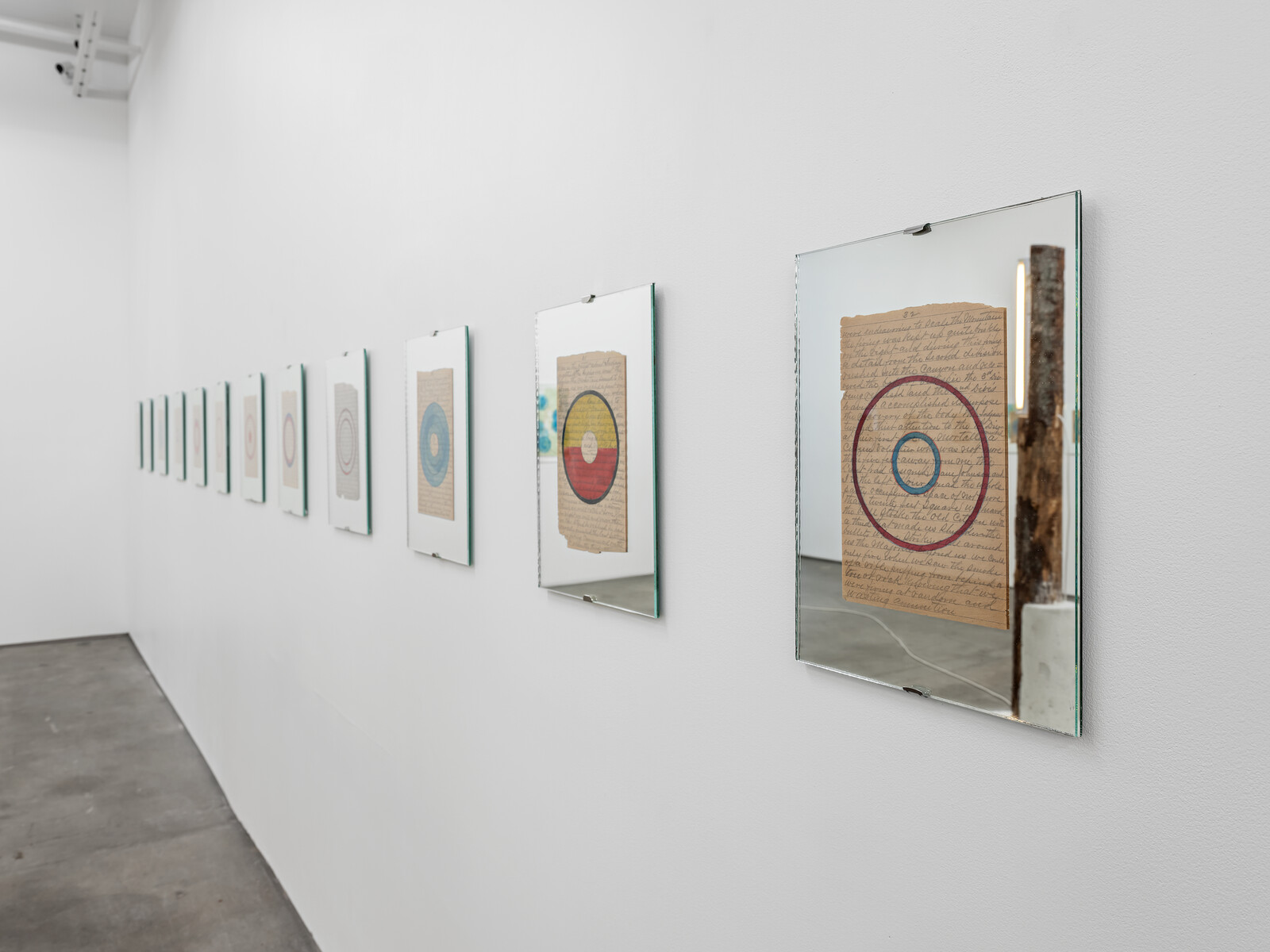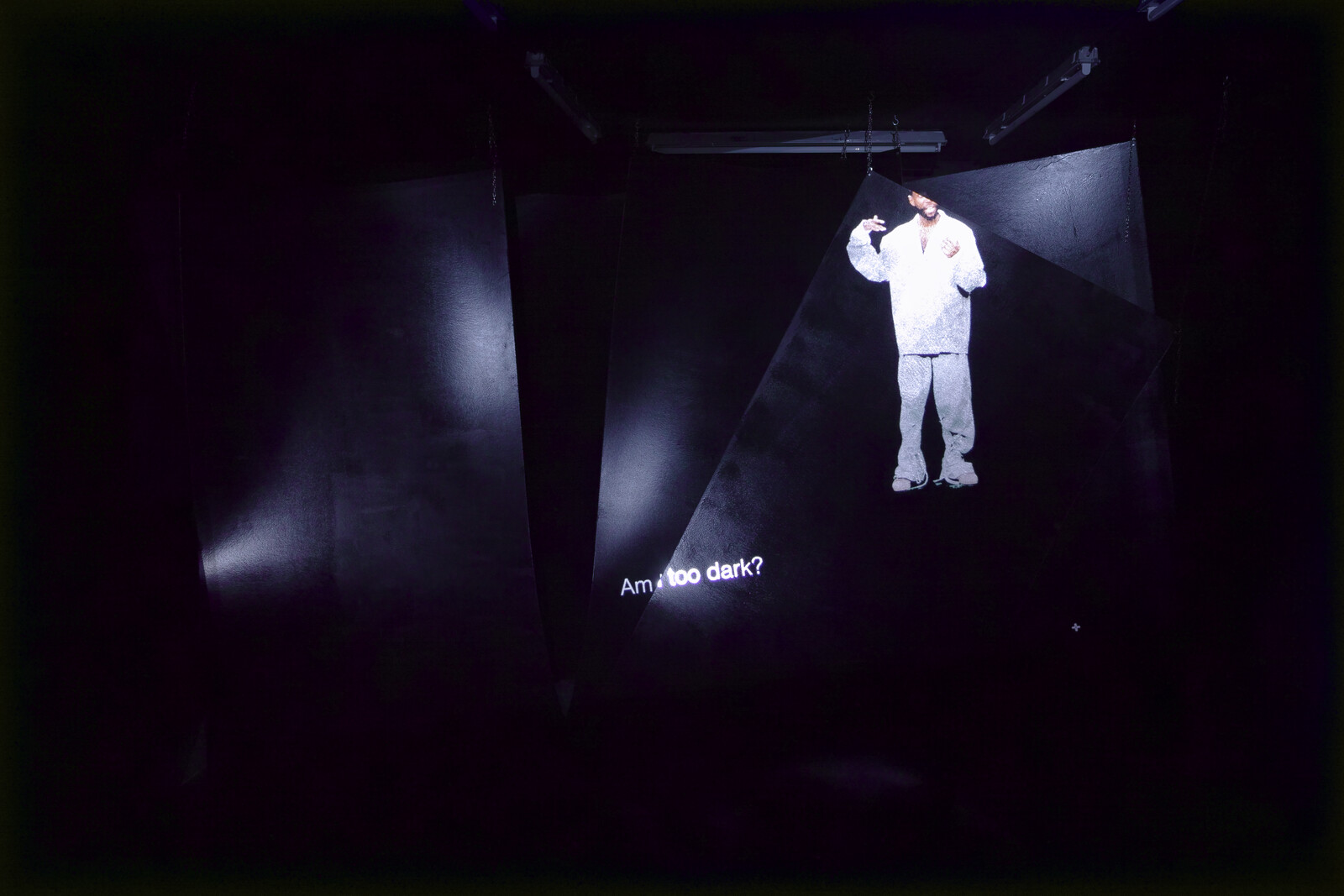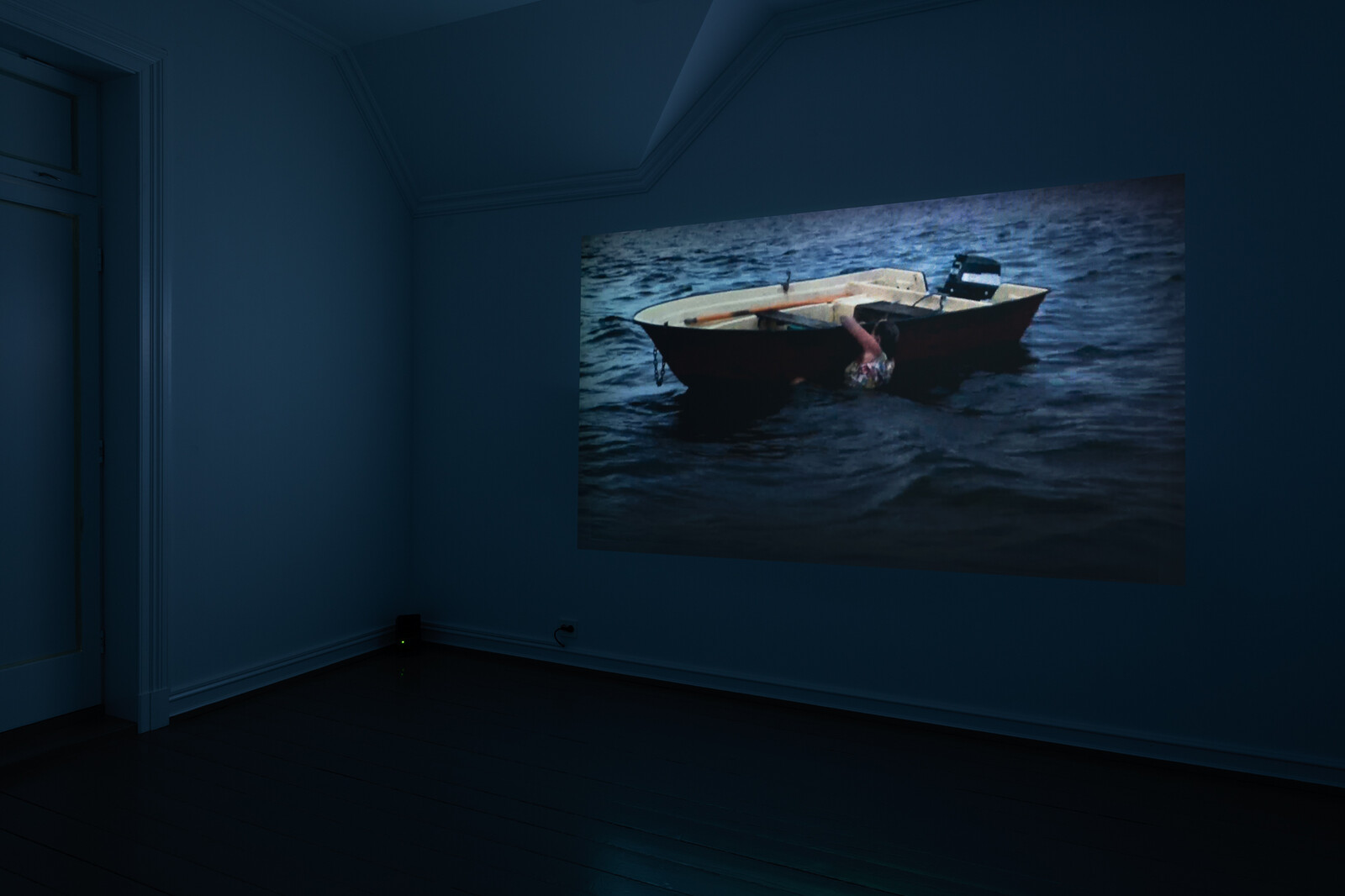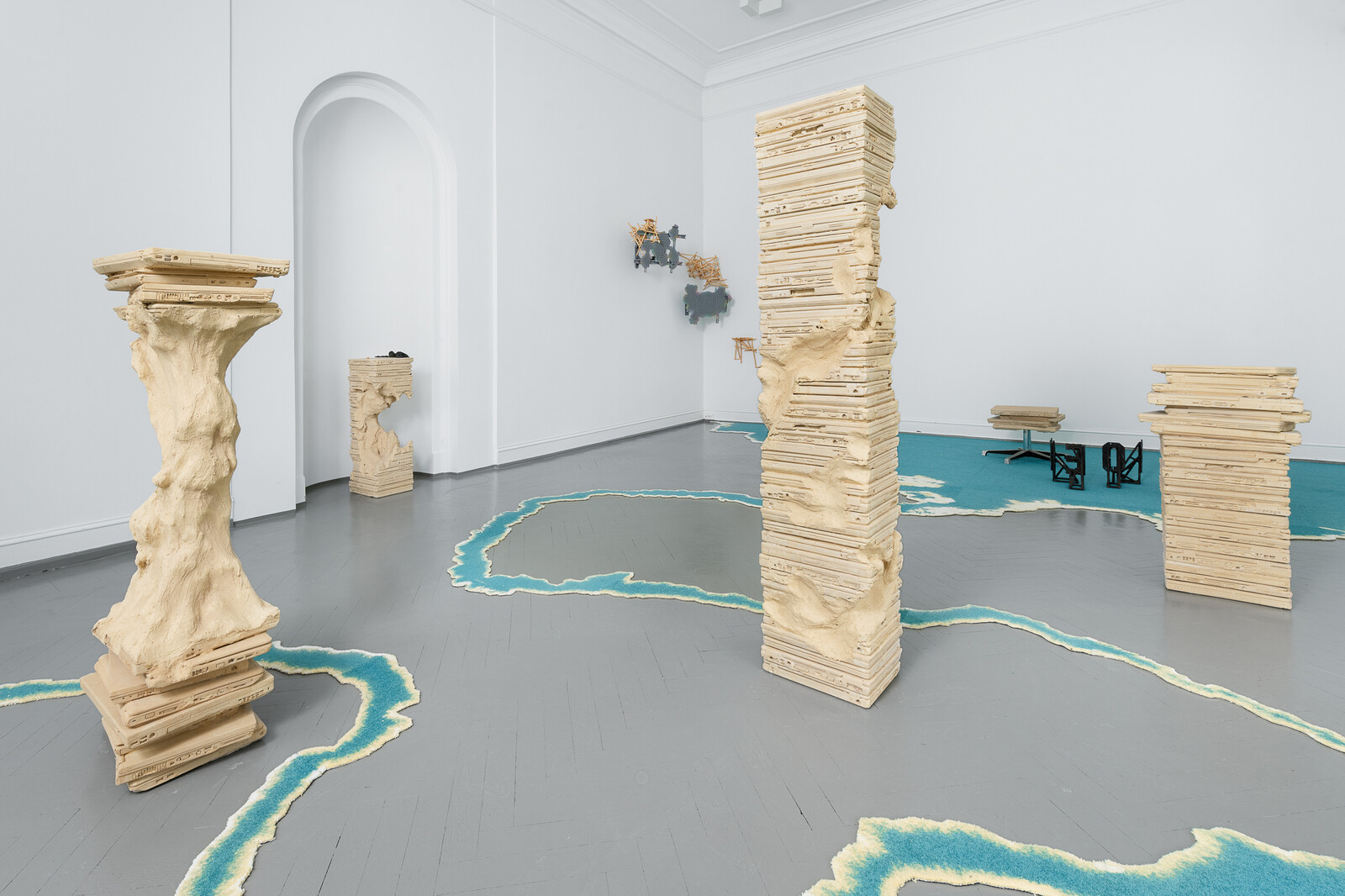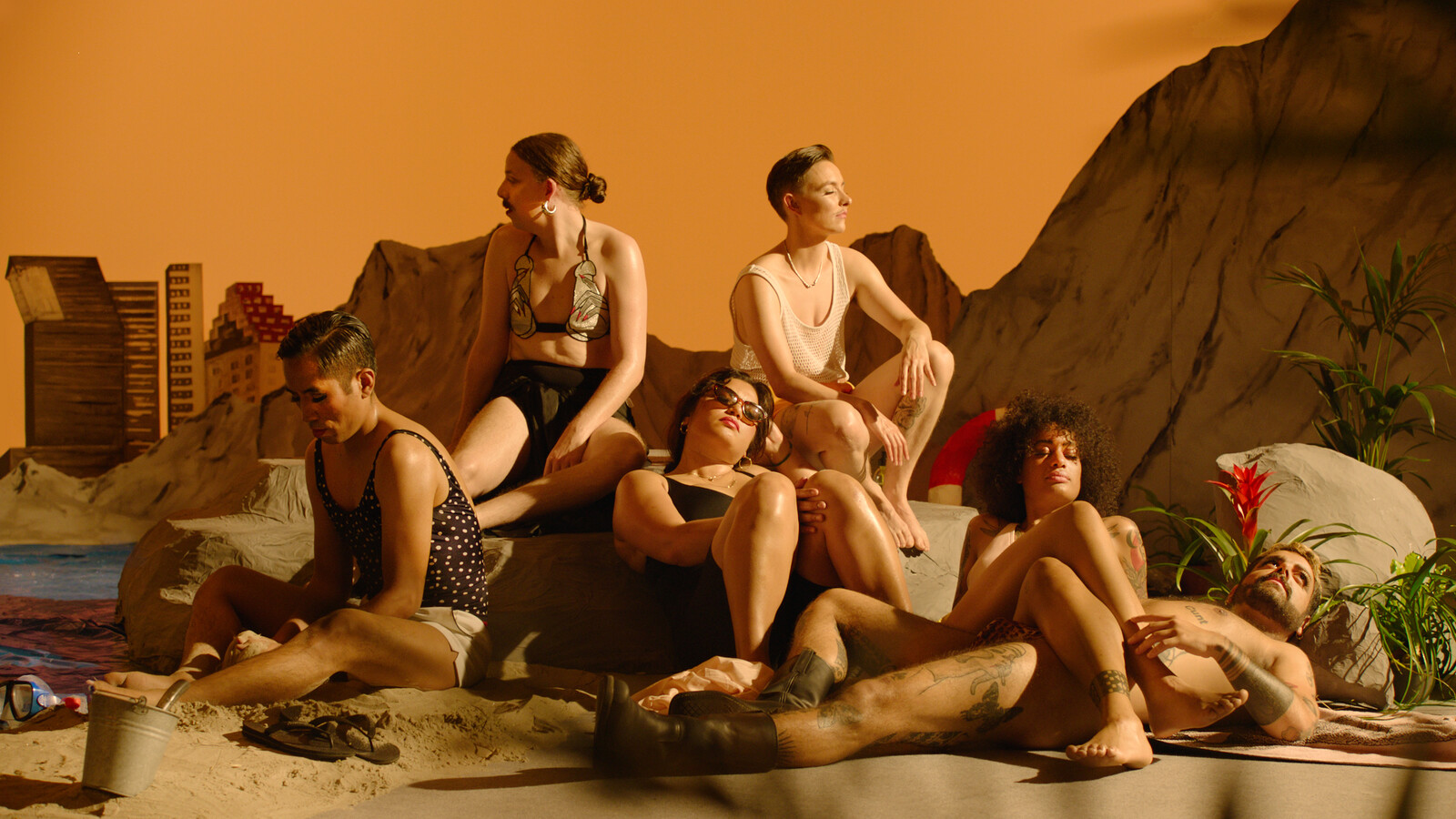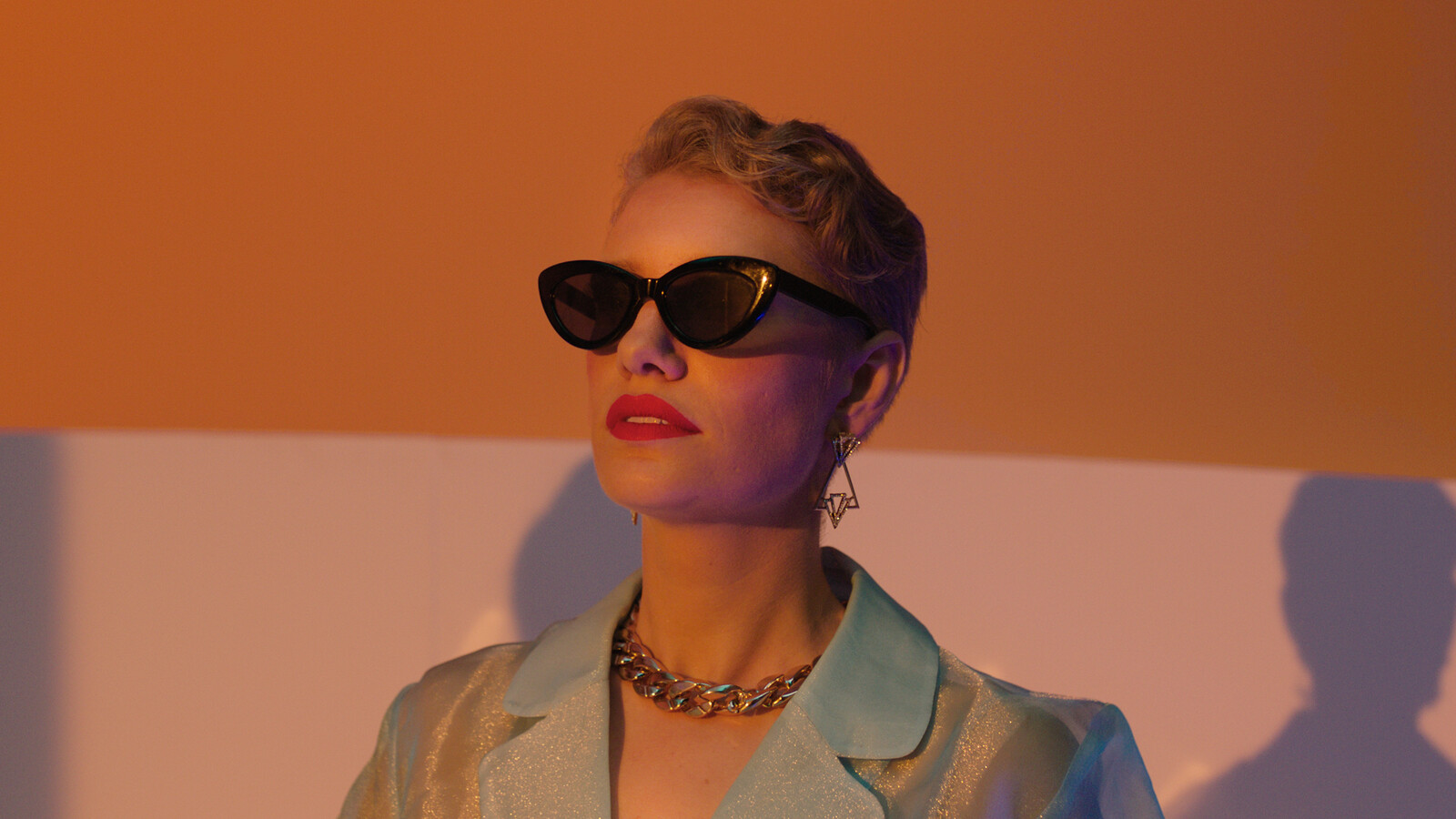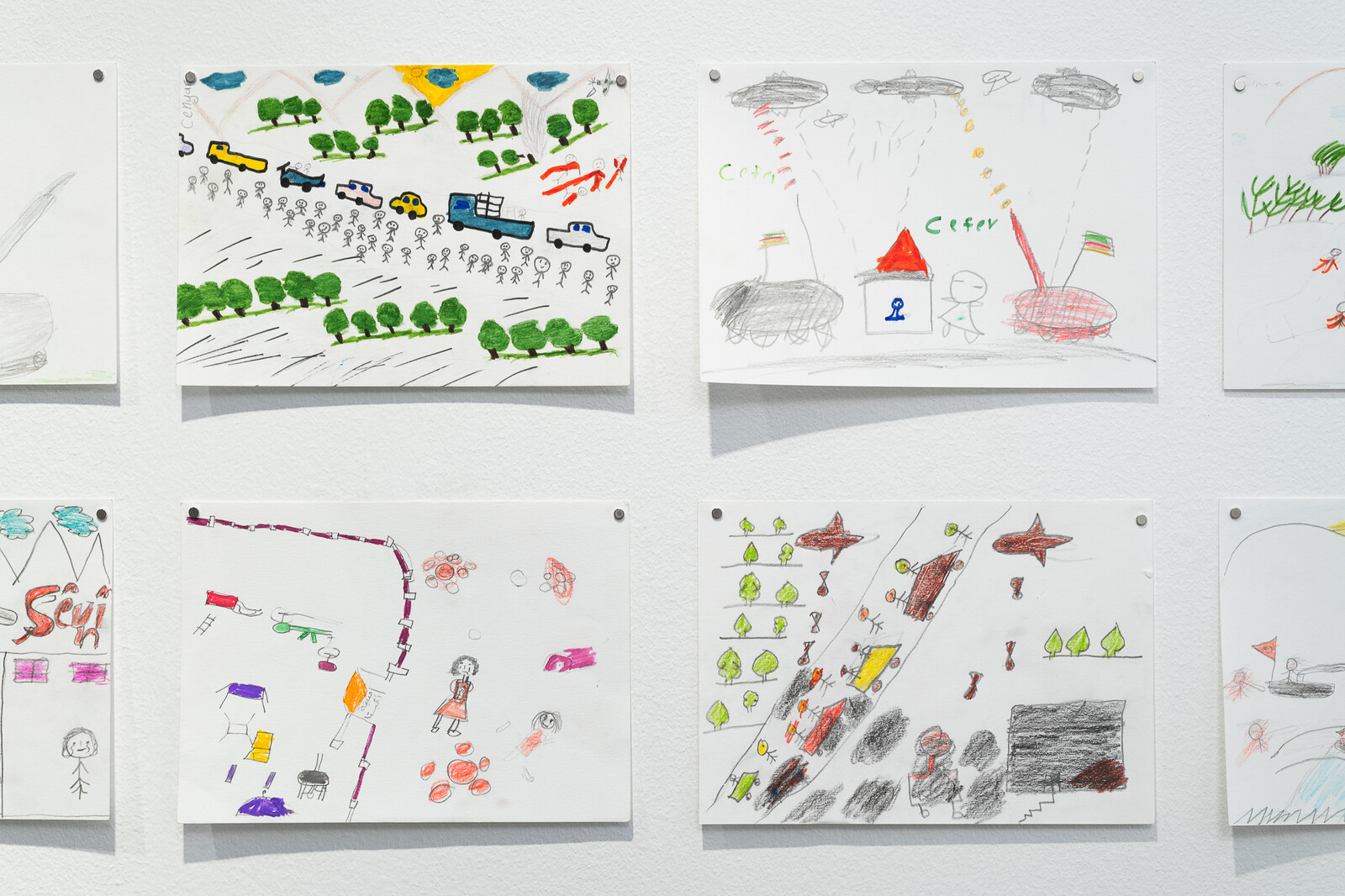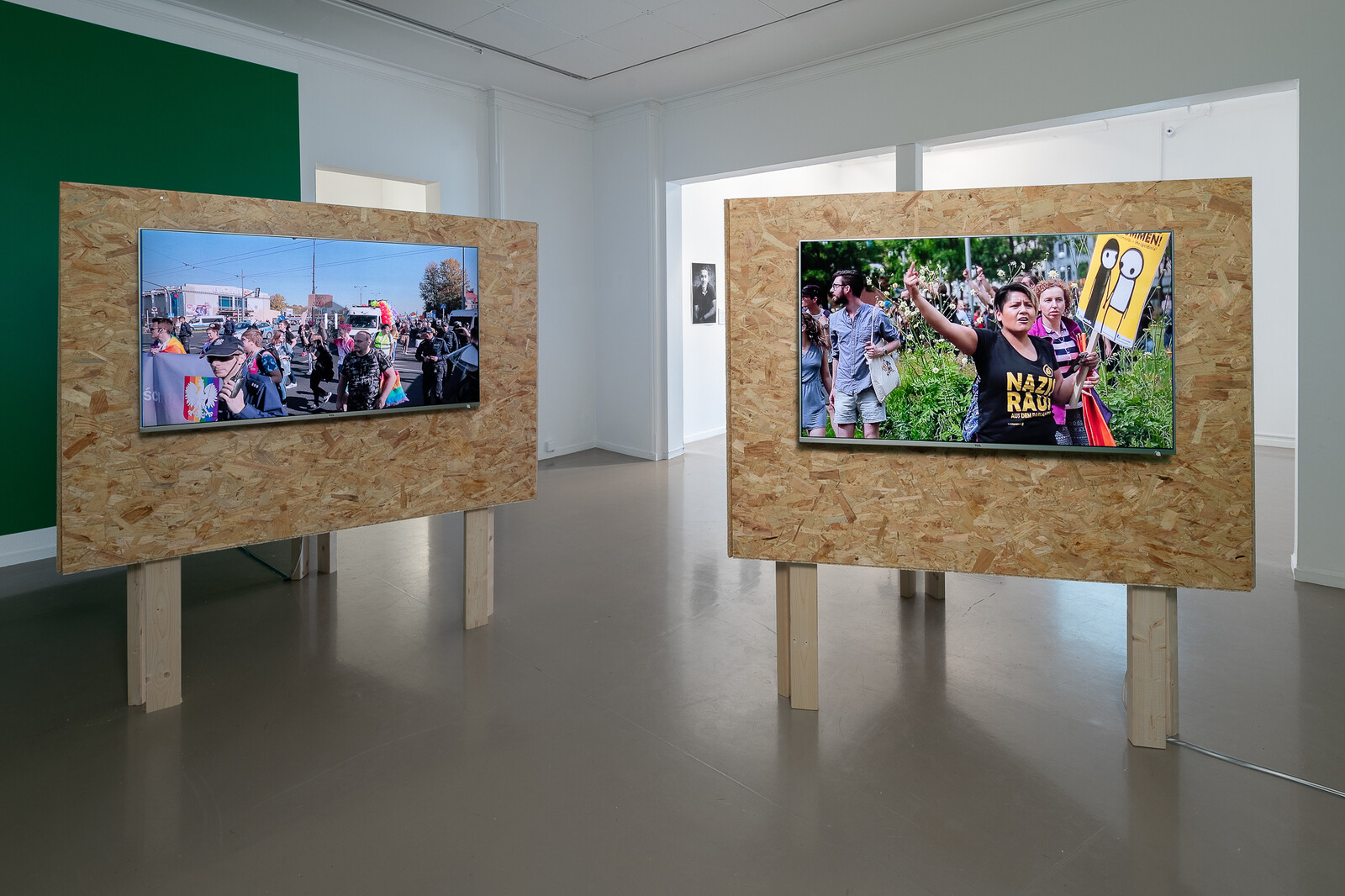The other day I learned the word flygskam (Swedish for flight shame), which feels like a necessary term for living today. I wrote and deleted several versions of this introduction, which all revolved around the unanswerable question of how to account for travel today, when it feels like a professional necessity, but also nonessential when the knowledge gained is read against the environmental harm that travel propagates. I found myself shamefully wondering if I went to Oslo to learn what I already knew.
To press this, I’ll start with artists whose work I’ve seen numerous times. At Kunstnernes Hus, Ed Atkins is showing as part of Silver Series, a retrospective of an artist’s videos in the institution’s cinema. Only Atkins rethought the format and instead of a screening series opted to make a new work collaged from footage taken from his old videos. Death Mask 5 (2019) combines images from over a dozen of his earlier works, including his CGI alter ego from Ribbons (2014), the haunting empty bedroom from Hisser (2015), and the boy playing a piano from Old Food (2017). It took some googling to remember the narratives of the original videos, and which figure came from where, because Death Mask 5, even though it reads like recycled aesthetics, also flows like its own narrative. Connections are made through the soundtrack, through repeated images, through a single word, and the work feels surprisingly coherent. At the beginning of the video, a man’s voice in the background is heard, “They say things are getting better. All I know is, they fucking better,” and though I know it’s a sound file from an older work, it feels incredibly current. I was left with something between hope and confirmation that it’s possible to find new ways of seeing what you knew before.
At STANDARD (OSLO), for his third show at the gallery, Los Angeles–based artist Oscar Tuazon decided to figure out his relationship to Norway. Tuazon—whose last name before he married was Hansen, one of the most common surnames in Norway—can trace back his family to Norwegians who settled in Minnesota in the nineteenth century. In the exhibition, titled “Oscar Hansen,” Tuazon shows a suite of drawings he made over texts from one of his ancestors’ archive that he received when his father passed away recently. The 1862 text is a discussion between Minnesota settlers and the American government about land and water rights: the subjects of Tuazon’s previous works. Tuazon’s experience of rediscovering a sense of self by finding his ancestors’ papers—and realizing the many works he made about water in the USA tie him back to his heritage—and he reasserts his relationship to his origins in this exhibition. Alongside the drawings are six sculptures, all titled Family Tree (2019), made of tree trunks he cut down himself in the countryside near Oslo.
While Tuazon’s exhibition explores what is remembered, passed down, or found, local artist Sandra Mujinga’s video installation Amnesia? Amnesia? (2019), at the artist-run space Noplace, explores what forgetting could mean. A short video projected on overlapping screens, it features a single figure, the writer and comedian Joe von Hutch, walking across the refracted moving image as he discusses memory and forgetting through things one—or is it he?—was told, as a function of race. “Stay out of the sun. / I forgot. / You’re getting too dark. / I forgot.” He speaks slowly, he is hesitant, he says, “They say amnesia is rare, but I think we forget all the time.” The short work leaves the viewer largely with a feeling of loss.
Mujinga’s video is contemplative and suggestive, while generating a sense of helpless empathy to a figure onscreen, an emotion further explored in The Boat (2019) by Jannicke Låker at Norsk Billedhoggerforening, the Norwegian Sculptors Society. In the six-minute video, a woman has fallen off a boat and is swimming at night around the vessel, trying to get back in. Though scripted, the work was shot live—the woman really was struggling to stay afloat, and over time her anxiety shifts from the realm of acting to feeling very, very real. Downstairs, Jan Freuchen is showing “Screenshot,” an installation of a kind of watery landscape (made of office carpet) with Jesmonite sculptures of columns made of laptops, like a memorial to contemporary labor sent from a distant future in which everything has turned to fine, brown dust.
Another version of a capitalist future is in Danish duo Kirsten Astrup and Maria Bordorff’s video at the Munch Museet: Summer Night by the Beach (2019), commissioned as part of the museum’s “On the Move” program, curated by Natalie Hope O’Donnell, that focuses on the neighborhoods between the museum’s current location (a modernist building in a residential area) to its future home on the Oslo waterfront. Dedicated to Kongshavn, an area that is now part of the Oslo Harbor that hosted baths and cabarets in the early twentieth century, the artists describe the video as a “film cabaret,” celebrating the history of the area in the face of contemporary development (if you google Kongshavn now, all you see is listings for condominiums). The video is a celebration of the capital (“it is generous and the sun shines on it,” sing the characters watching a cabaret) shot on a soundstage in saturated colors. Its old-fashioned, nostalgic aesthetic gives the work the feeling of dancing on the brink of catastrophe, celebrating a bygone world, which is true: the cabarets at Kongshavn closed in 1946, after a five-year break during the Nazi occupation, and then an attempt to recreate the culture of the place that never bore fruit.
On the way to the airport, I stop at Akershus Kunstsenter to see “My Dream – Our Common Future?,” an exhibition about the rise of right-wing politics around the world. With works by Gelawesh Waledkhani, Iffit Qureshi, Thierry Geoffroy, and Tomáš Rafa, the exhibition’s subjects veer from contemporary art itself (Geoffroy is showing some works about the Venice Biennale, including a tourist umbrella with an image of the city’s canals spray-painted with the words—also the work’s title—“we are not all on the same boat,” 2019) to Waledkhani’s work, which is based on her life experience as a child migrant remembering the short, little relief of drawing classes in the refugee camps she lived in. She is showing No One Can Take You Away From Me (2018–19), a group of drawings from workshops with children in the Kurdish refugee camps Serdm and Berxwedan in northern Syria. Rafa’s work runs across six screens, each a video documenting the violence of a right-wing march or political protest. The works’ titles give information about the events (for example, Polish hooligans and far-right extremists block the first Pride parade in Lublin, Poland, 13.10.2018, 2018) and the checklist includes some background information, but the viewing experience is of six videos with little context, merging with each other, the sound bleeding from one to another, bone-chilling in its display of conflict and hate.
I watch a neo-Nazi march in Poland and think of Charlottesville. I think of displaced children in Syria alongside those in detainment camps in Texas. It’s terrifying to think that all places are the same, that the rise of right-wing nationalism is all-encompassing, that the experience of loss, or fear, is omnipresent. And the definite near-future rise in climate refugees means they will face xenophobic systems rigged against them in states unable to answer the needs of a deteriorating planet and thus holding even stronger to borders, or whatever is left of them. Again, I think about Atkins’s video: “They say things are getting better. All I know is, they fucking better.” To revisit what you already know in the hopes of finding something new is also a form of travel.

